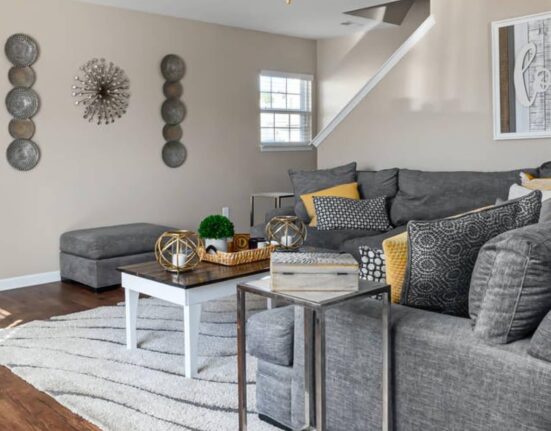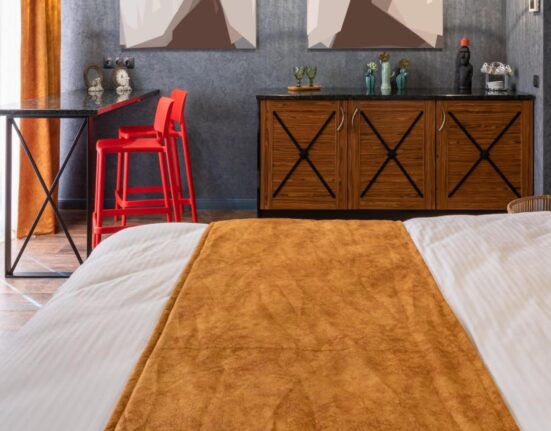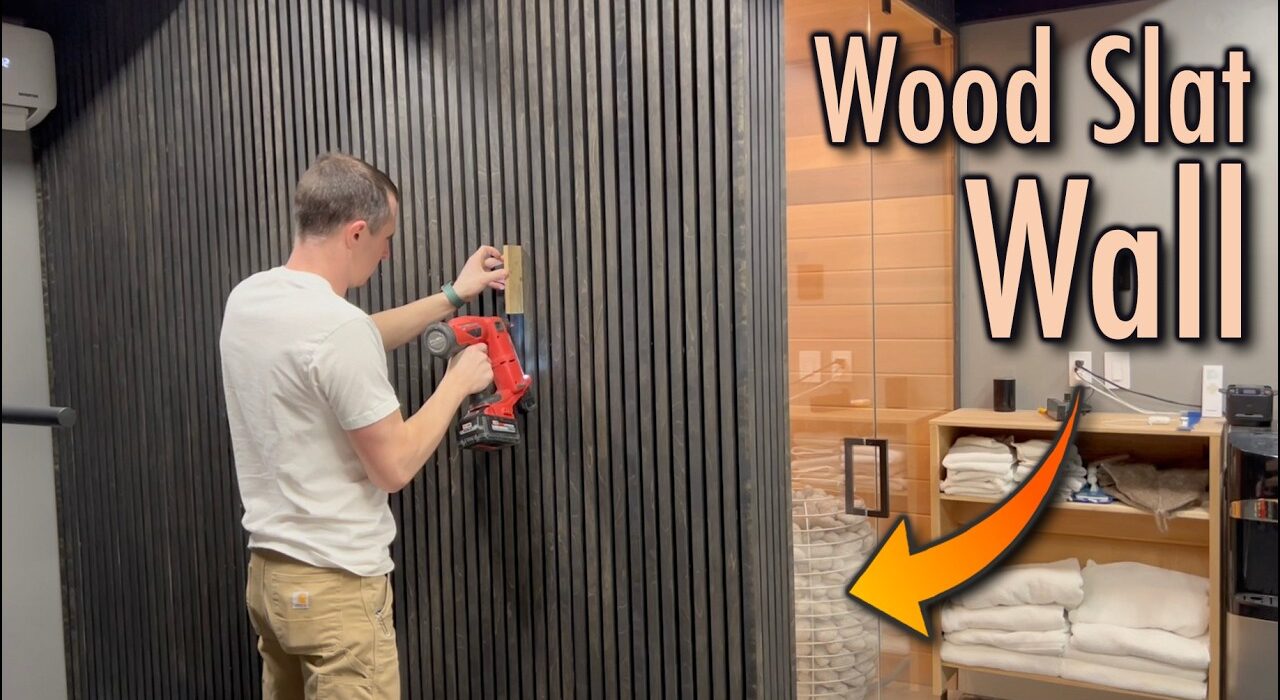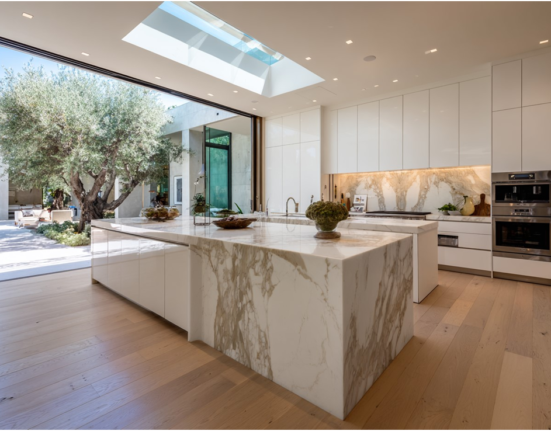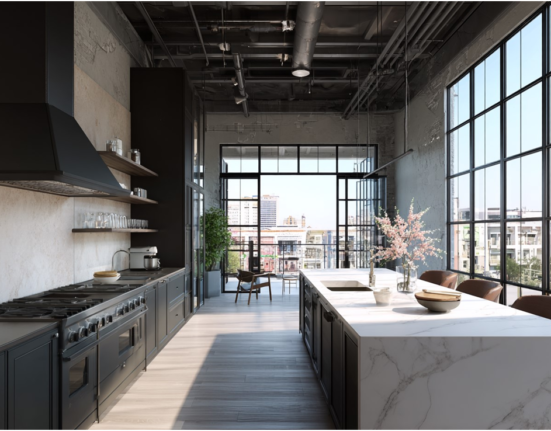Interior design is more than just decorating a space—it’s about creating an atmosphere that reflects personal style while enhancing comfort and functionality. One trend that’s been making waves in modern design circles is the wood slat wall. With its clean lines, natural tones, and architectural flair, a wood slat wall can completely transform a room, adding texture, warmth, and sophistication.
In this article, we’ll explore what a wood slat wall is, the reasons for its popularity, the different styles available, how to install it, and maintenance tips. Whether you’re renovating your home or just looking for a unique design element, you’ll see why a wood slat wall could be the perfect choice.
What is a Wood Slat Wall?
A wood slat wall is a vertical or horizontal arrangement of evenly spaced wooden slats, typically mounted on a solid backing or frame. These slats can vary in width, thickness, and spacing, allowing for a variety of visual effects. The walls may be left open for acoustic or decorative purposes or backed with materials like felt or panels for additional depth and color contrast.
Wood slat walls are commonly made from hardwoods such as oak, walnut, teak, or softer woods like pine, depending on the desired finish and budget. These walls may be installed indoors or outdoors and are often used in living rooms, offices, bedrooms, hallways, and even on ceilings for added dimension.
Why Choose a Wood Slat Wall?
There are several compelling reasons why homeowners, interior designers, and architects are gravitating toward wood slat walls. Here are some of the top benefits:
1. Aesthetic Appeal
A wood slat wall brings a natural, organic texture that softens and warms a space. The clean lines and symmetry also give a contemporary feel, making it suitable for modern, Scandinavian, industrial, or mid-century interiors.
2. Versatility
Wood slats work beautifully in both residential and commercial settings. You can use them as an accent wall, room divider, ceiling feature, or even to conceal unsightly elements like radiators or wires.
3. Acoustic Benefits
When backed with felt or sound-absorbing materials, wood slat walls can help reduce echo and improve the acoustics of a room. This is especially useful in home theaters, offices, or recording studios.
4. Customization
From stain color to spacing, length, and orientation, wood slat walls can be tailored to suit any design vision. You can go rustic, minimalist, bold, or understated—it’s all up to you.
5. Sustainability
Many suppliers now offer eco-friendly and FSC-certified wood, making it easier to design responsibly while maintaining a high-end look.
Styles and Design Ideas for Wood Slat Walls
There are countless ways to incorporate a wood slat wall into your interior design. Here are some of the most popular styles and ideas:
Vertical Wood Slat Wall
This is the most common orientation and provides a feeling of increased height in a room. It’s often used behind TVs, in hallways, or in bedrooms behind the headboard to create a focal point.
Horizontal Wood Slat Wall
Horizontal slats can make a room feel wider and are ideal for long walls or commercial spaces. They offer a more laid-back, relaxed aesthetic.
Painted or Stained Slats
While natural wood tones are timeless, painting your slats in black, white, or bold colors can create a dramatic or modern look. Staining allows the grain to show through while changing the hue to match your décor.
Wood Slats with Lighting
Incorporating LED strips between or behind the slats can elevate the design, adding a touch of elegance and ambience—especially for feature walls or night-time settings.
Mixed Material Walls
Some designs combine wood slats with other materials such as concrete, metal, or mirrors for a high-contrast, eclectic effect.
How to Install a Wood Slat Wall
Installing a wood slat wall is a relatively straightforward process if you’re handy with tools. Here’s a step-by-step guide to help you get started:
Materials Needed:
- Wooden slats (pre-cut or custom-cut)
- Backing material (plywood, MDF, or acoustic panels)
- Measuring tape and level
- Saw (for trimming slats if needed)
- Construction adhesive or screws
- Finishing nails
- Wood filler or caulk (optional)
- Sandpaper
- Paint or stain (if not using pre-finished wood)
Step-by-Step Installation:
- Prepare the Wall: Clean the surface and ensure it is smooth and dry. You may want to paint or apply a dark backing first to enhance contrast.
- Measure and Plan: Mark where each slat will go using a level to ensure perfect alignment.
- Cut Slats to Size: If necessary, trim your slats to fit the wall or desired height.
- Apply Adhesive: Place construction adhesive on the back of each slat or directly on the wall.
- Mount Slats: Secure each slat to the wall, using finishing nails for added strength. Use spacers for even gaps.
- Finish Edges: Fill any gaps or holes with wood filler, then sand for a smooth finish.
- Stain or Paint: Apply your chosen finish and sealant for durability.
Professional installation is also an option if you want flawless results or are dealing with complex designs.
Maintenance Tips for a Wood Slat Wall
Maintaining your wood slat wall ensures its longevity and aesthetic appeal. Here’s how to keep it looking fresh:
1. Dust Regularly
Use a microfiber cloth or vacuum cleaner with a soft brush attachment to remove dust from between the slats.
2. Wipe Down
For more stubborn dirt or stains, wipe gently with a damp cloth. Avoid harsh chemicals that could damage the wood finish.
3. Polish or Oil
Depending on the type of wood and finish, applying wood polish or oil once or twice a year can help preserve its shine and prevent drying or cracking.
4. Check for Damage
Inspect for loose slats, warping, or signs of pests, especially in humid environments. Repair promptly to prevent further issues.
Where to Use a Wood Slat Wall in Your Home
The beauty of the wood slat wall lies in its versatility. Here are some ideal locations to consider:
Living Room
A slat wall behind the TV or as a fireplace surround can serve as a stunning focal point.
Bedroom
Install it behind the bed to act as a natural, textured headboard, or use it to create a cozy reading nook.
Entryway
Welcome guests with a stylish entrance featuring a slatted wall combined with a bench or hooks.
Office or Study
Enhance productivity and reduce noise with a sleek slat wall that doubles as an acoustic solution.
Kitchen or Dining Room
Use a wood slat feature to break up tiles or flat cabinetry, adding warmth and contrast.
Conclusion: Elevate Your Space with a Wood Slat Wall
A wood slat wall is more than just a design trend—it’s a timeless feature that adds architectural interest, warmth, and function to any space. Whether you’re aiming for minimal elegance, rustic charm, or modern sophistication, the versatility and natural beauty of wood slats make them a compelling choice for homeowners and designers alike.
From simple DIY installations to custom-crafted masterpieces, there’s a wood slat solution for every budget and style. With the right planning and care, your wood slat wall will not only impress visually but also stand the test of time. So if you’re looking for a unique way to elevate your interiors, don’t overlook the transformative power of this stylish feature wall.




